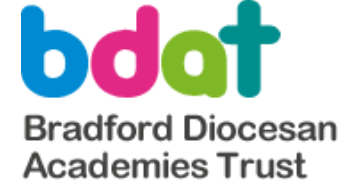The national schools commissioner wants to challenge the idea there are only “the very best” or “very weak” schools by identifying them along eight different streams: strongest performers, rapid improvers, steady improvers, steady and secure, rapid decliners, steady decliners, improver decliners, and weakest performers.
At a conference in London on Tuesday, Sir David Carter revealed his “Schematic” tool, which CEOs, RSCs and other school leaders can use to work out whether their school is improving or declining. It will also be provided as a paper package for multi-academy trust leaders during internal reviews.
Sir David believes the tool is “more subtle” than Ofsted judgments and will give leaders more information about steps they should take to increase their schools’ performance.
He wants it to challenge the idea that schools are either “the very best” or “very weak”. He believes instead that there are eight categories, ranging from the “strongest performers” whose performance remains excellent over time, and “rapid improvers” whose performance suddenly shoots up, to “steady improvers” whose performance gets better over a longer time, and the “steady and secure” which are quite good and don’t dip.
On the other side of the divide, he has identified “rapid decliners” whose performance drops drastically, “steady decliners” where performance tapers down over time, “improver decliners” which make initial gains but see a drop, and the “weakest performers” which rarely hit floor standards and see consistently poor results.
Schematic echoes the health-checks for multi-academy trusts that were piloted from January. It should allow leaders to gauge which schools and trusts are “capacity givers”, and so should expand, and which are “capacity takers” and should not.
Once a “capacity taker” is improving again, Sir David wants it to “repay its debt” and help other schools do the same, he told delegates at the Westminster Education Forum.
The model will be shared with schools as “widely as possible” between now and Christmas, although its use will not be compulsory.
He told Schools Week that RSCs may use the labels to “talk over” expansion plans with MATs, adding that the team had “quite deliberately” not recreated Ofsted grades but were instead going for a measure of improvement that was “more subtle”.
“School improvement is not linear, it’s messy,” he said.
But Robert Hill, an education consultant, said he “wasn’t sure another categorisation model is what schools need right now”.
His words were echoed by Mark Wright, director of AMiE, ATL’s leadership section of the National Education Union. He believes the tool could be “another trawl for evidence” which would add to headteachers’ workloads, and wants to know “exactly what kind of criteria” are behind each category.
Neither Progress 8 nor exam results are flawless measures, he pointed out.
However, Geoff Barton, the general secretary of the Association of School and College Leaders, said Sir David had put huge work into the model, and brought “a real intelligence” about the school system.
He welcomed its rejection of “gimmicky quick-hits” and emphasis on school improvement as evolutionary.







Oh dear. How can it be that there is always limitless money for these people to produce nonsense. Improving decliner, really? Why do we put up with it? This man’s job title is National Schools Commissioner. It is impossible for him to commission a school, no new schools can be created. Academies yes, but not schools. The whole point is they are two different things. Job title and thought processes muddled at best, disingenuous at worst.
It is difficult to understand how large trusts in particular will be able to fit into such a model. Surely it is those who run the trust that should analyse themselves and use a continuous improvement model across their organisation and within individual schools. We have had two or three decades of individuals producing models and announcing them at conferences. Michael Barber, David Hargreaves, David Hopkins et al. Tool kits, models, analysis tools are all very well but you don’t need a weather man to tell which way the wind blows, such things are usually “emperors clothes” and will only last until the next person that should be listened to produces another painting by numbers process. We are like farmers who continuously find new weighs of weighing the pig when it is really down to the farmers to feed it!
Surely outlining a methodology that can be understood and debated is better than keeping the ‘ingredients’ a secret. This transparency is useful.
Phil, I agree that transparency is useful. I also agree that a methodology is useful. However, if Leaders need an external “schematic tool” to help them decide whether their organisation or school is improving or declining then we have to ask what is going on? Such an approach is either patronising and/or insulting on one hand or on the other hand if leadership is so poor that that it is necessary then “schematic tools” are simply plasters on wooden legs. It smacks of a mechanistic managerial approach that characterises a top down model that is largely old fashioned and dated. Phrases like a paper package to be used during internal reviews show how far off the pace such thinking is. World class organisations use a small number of crucial key performance indicators that the whole organisation understands, 21st century technology then helps to inform decisions and actions almost immediately. The approach outlined here is off the pace, and tired in its philosophy, by the time any information is put together the moment will almost certainly be gone. The whole approach, no matter now well intended, appears paternalistic at best and condescending at worst.
As I said – muddled. The scheme. The job title. And Michael I agree – paternalistic, top down and old fashioned. And. Muddled.
How long would it be before ‘strong and stable’ would be reclassified as ‘coasting’? And anything with the word ‘decliners’, however supposedly subtle the distinctions, will mean’on the way to Inadequate’?
Estate Agents will be updating their house selling websites already.
Is your new home in the catchment area of an OFSTED Outstanding, DfE Progress 8++, DfE EBacc ++++, Carter “Rapid Improver” Academy run by an Executive Head of a “Capacity Giving” Trust?
To think, teachers just used to teach children. No wonder we can’t get anyone to do the job anymore!